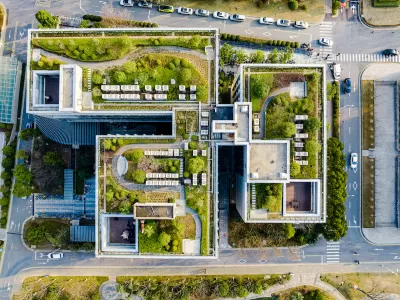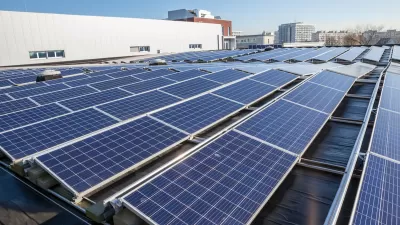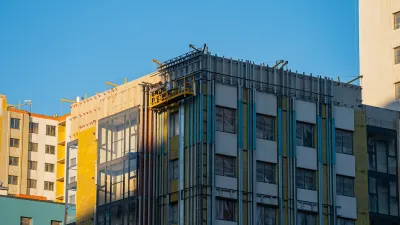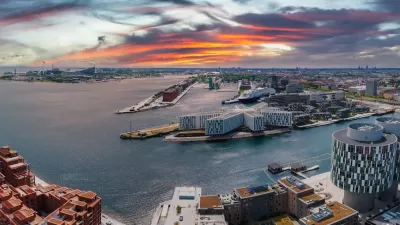The cheapest energy is energy not used.

A white paper released by the World Economic Forum and PwC outlines “actionable interventions” that could reduce emissions from buildings by up to 38 percent. As Nish Amarnath explains in Smart Cities Dive, these interventions include efficiency measures and electrification.
“Demand-side actions can be undertaken by “‘reallocating previously wasted or unnecessarily used energy to new consumers and/or new uses,’ the paper says, noting that the cheapest form of energy is ‘energy that is not used.’” In addition to reducing the amount and intensity of energy used, the paper recommends “retrofits and other upgrades that enable buildings to use less energy to perform the same task and are typically funded by capital expenditure with payback in less than 15 years.”
The paper adds a more systemic solution. “As a third lever, it recommends collaboration measures across the value chain, such as changing building design, putting in place district heating and cooling systems and district energy management systems, on-site energy production and storage, and the use of greener materials as well as demand response programs.”
FULL STORY: Buildings can reduce energy intensity by up to 38%: report

Alabama: Trump Terminates Settlements for Black Communities Harmed By Raw Sewage
Trump deemed the landmark civil rights agreement “illegal DEI and environmental justice policy.”

Planetizen Federal Action Tracker
A weekly monitor of how Trump’s orders and actions are impacting planners and planning in America.

Why Should We Subsidize Public Transportation?
Many public transit agencies face financial stress due to rising costs, declining fare revenue, and declining subsidies. Transit advocates must provide a strong business case for increasing public transit funding.

Understanding Road Diets
An explainer from Momentum highlights the advantages of reducing vehicle lanes in favor of more bike, transit, and pedestrian infrastructure.

New California Law Regulates Warehouse Pollution
A new law tightens building and emissions regulations for large distribution warehouses to mitigate air pollution and traffic in surrounding communities.

Phoenix Announces Opening Date for Light Rail Extension
The South Central extension will connect South Phoenix to downtown and other major hubs starting on June 7.
Urban Design for Planners 1: Software Tools
This six-course series explores essential urban design concepts using open source software and equips planners with the tools they need to participate fully in the urban design process.
Planning for Universal Design
Learn the tools for implementing Universal Design in planning regulations.
Caltrans
Smith Gee Studio
Institute for Housing and Urban Development Studies (IHS)
City of Grandview
Harvard GSD Executive Education
Toledo-Lucas County Plan Commissions
Salt Lake City
NYU Wagner Graduate School of Public Service





























